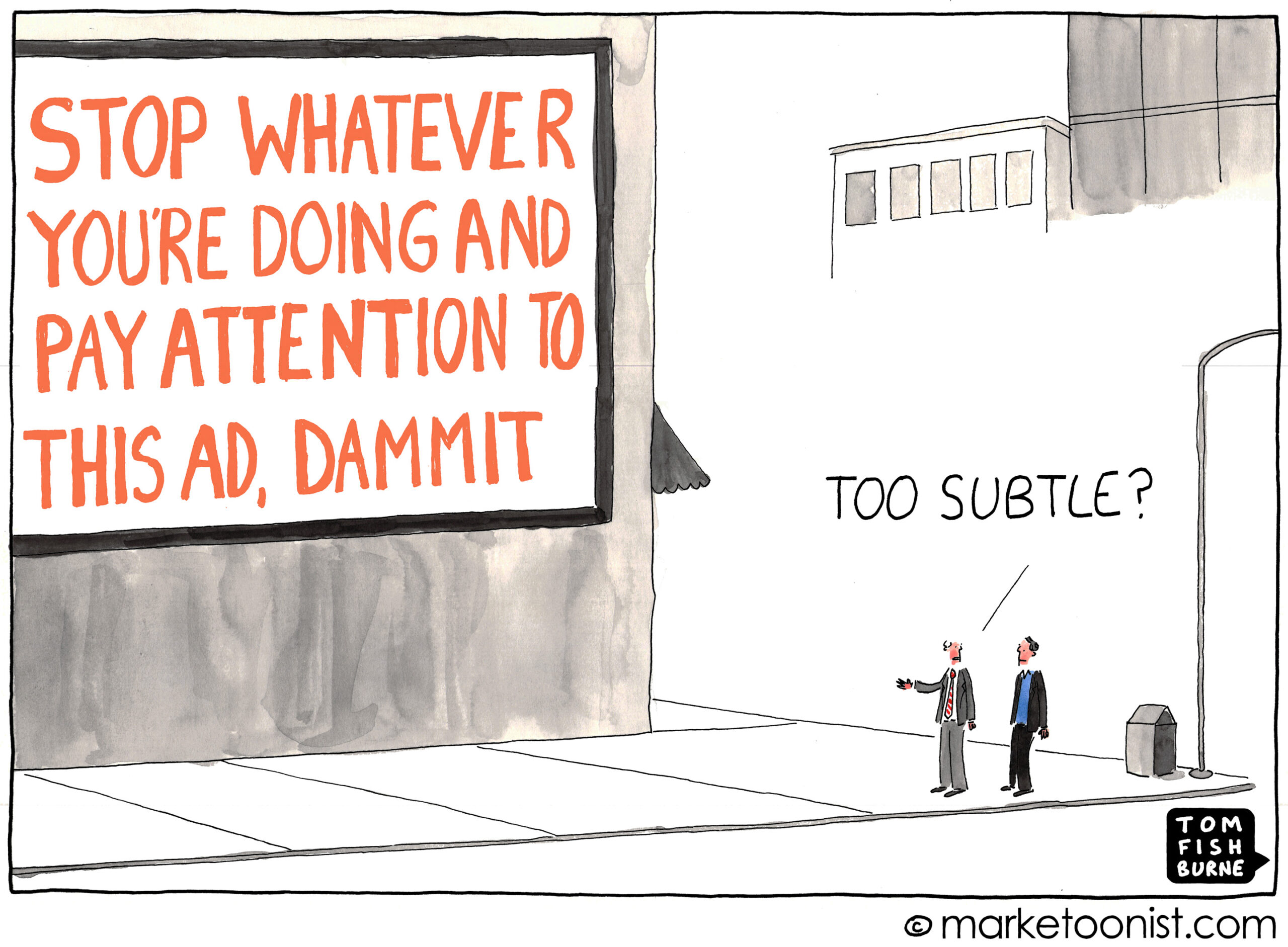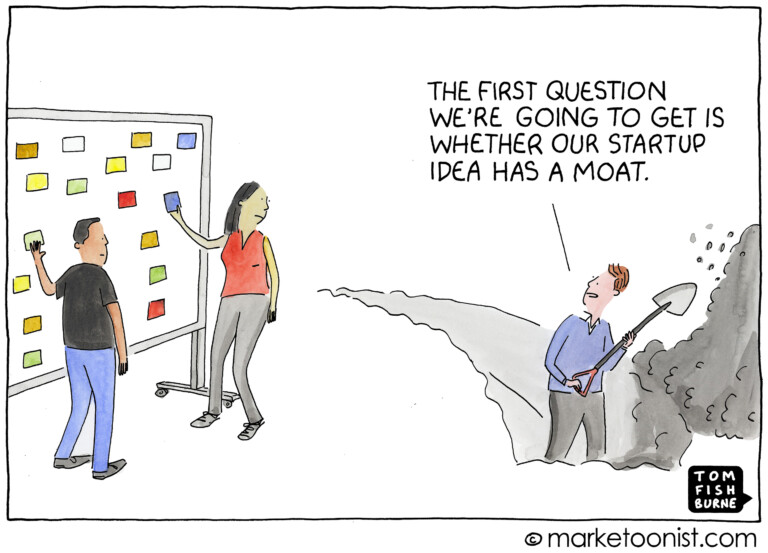In fact, interrupting is the only way advertisers can steal attention from consumers these days, but does it work?
Hell no.
It’s a hostile act designed to break something…
…like the continuous progress of “whatever you’re doing.”
Interruption stops, hinders, and breaks things…
…conversations…
…attention…
…focus.
Sadly, it’s the only thing advertisers today know what to do in a world of attention scarcity.
They must steal it.
But what they don’t know or care about is the true cost of interruption – the loss of trust and brand currency.
You see – people enjoy continuity – good things happen when you’re in a “state of flow,” focused, in a rhythm, and progressing.
When you’re engaged, paying full attention, and focused, good things generally happen.
Like making good decisions.
Even in the behavioral sciences, interruptions are typically found to be disruptive and negatively affect both performance and behavior.
This is serious business folks!
Just imagine the potential consequences of interruptions in the anesthesiology, transportation, and aviation space.
Brands should know by now…
…interruptions are disruptive and distracting, and negatively impact the performance and outcome for advertisers and consumers alike.
It’s a double negative.
It pisses off consumers and erodes brand equity.
And in the digital universe and the coming metaverse, the opportunity for interruption is infinite…
…endless advertising mediums and channels…
…a playground and ear-screeching megaphone for megalomaniacs.
These are scary times in the marketing world my friends, so please pardon my interruption.
Don’t Follow Me
People generally don’t like to be followed, it’s bottom line creepy and scary.
Imagine going on a road-trip vacation and having someone follow your car wherever you went? For hundreds of miles? Forever and ever?
Would that freak you out just a little bit?
Brands do this all day online.
But that’s ok?
Here’s the bad news…
…online stalkers are here to stay, addicted to their crack-piped big data targeting tools so nobody gets out alive!
And just like the buzzards they are, they’ve given their heinous practice a fancy scientific name to cover their tracks – they like to call it “behavioral retargeting,” and define it as “…a form of online advertising that can help you keep your brand in front of bounced traffic after they leave your website.”
The perfect logic goes like this:
Consumers are not interested in your brand offer and run away from your ad placement, but you think it will help your brand offer if you chase said consumer around the internet day and night with the same offer!
Madness!
But wait there’s more…
…let’s say you end up buying the “engagement ring offer,” …
…the demand has been supplied, yet the “behavior retargeting monkeys” don’t know that so they continue serving you fine jewelry ads ad nauseam.
The great irony here is that the holy grail of buyer decisions is based on trust, and this is the very thing that the interruptive and retargeting stalkers destroy for a living 24-hours per day.
But really, who needs trust when you have data!
All this wondrous personal data that all of us poor souls have surrendered without much of a fight – giving the data gods unlimited power to seek and destroy our attention at will and show no mercy.
And they know everything!
It’s the new behavioral science.
The shortest path to marketing insanity.
“They” know what you like, who you like, what you ate for breakfast, watched on Netflix, searched online, asked Alexa, listened to on Spotify, bought at the grocery store…and best of all…
…they can trace your every move thanks to that personal GPS tracking device you carry with you 24/7 called your iPhone.
But don’t worry, you’re safe reading this magazine article because good ole’ fashioned print doesn’t stalk, is woefully incapable of “behavior retargeting” and won’t ever interrupt you.
So, I hope you enjoyed the experience.
May the marketing force be with you.
To your steadfast unruliness!






